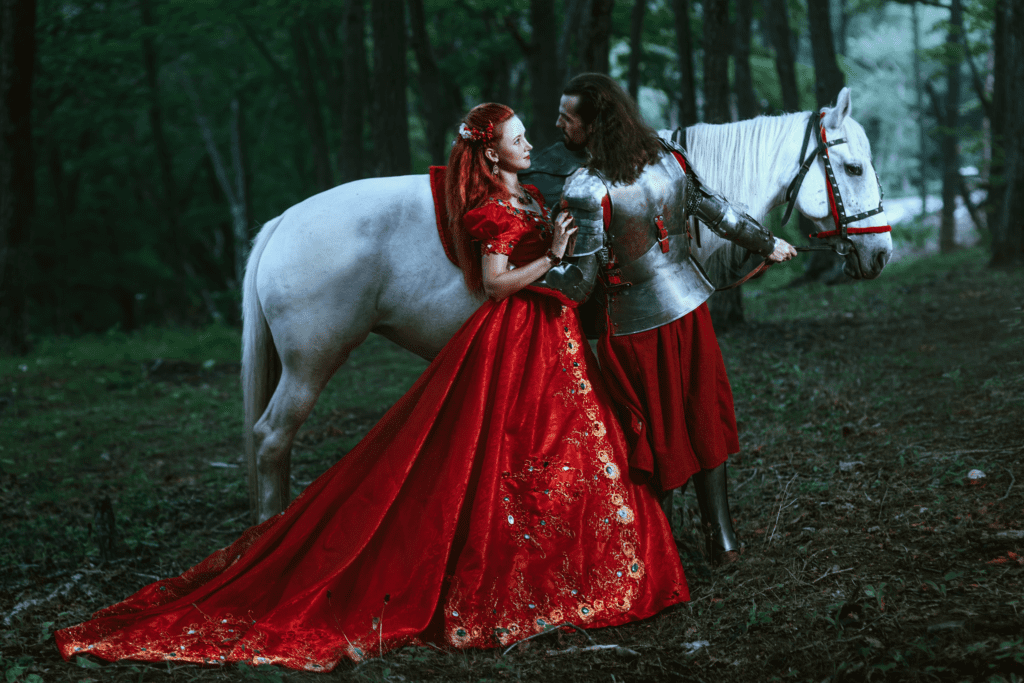
What did romantic relationships look like back in the past? People assume that love was all happy and rosy for couples back then because they followed a traditional value system, but if you look back at the history of romance, marriage, and courtship, you’ll see that was not always the case. By looking back on these four main trends that defined our ancestors’ attitudes towards relationships, we’ll gain perspective on where we are in love now. (Estimated reading time: 9 minutes)
“Love looks not with the eyes, but with the mind, And therefore is winged Cupid painted blind.”
— William Shakespeare
Romantic attraction is a very real experience between two people — but how that romance shows up in a partnership has varied throughout human history.
In some cases, expressions of romance were discouraged because it was considered impractical and limited by social rules and constructs.
Most singles today will tell you that romance is dead. Despite the freedom and financial independence we enjoy today, how couples woo each other has lost its luster since the early age of chivalry, courting, and unhinged displays of affection.
With the rise of online dating, and a more open-minded culture, it’s become harder to do this. While these tools have advantages, the downside is that it’s made communication much shallower and more disingenuous.
The marketplace mentality of the current dating landscape has made singles feel more like commodities than people. As a culture, we’re guided by the instant gratification of getting the pick of a glut of love options available at our fingertips.
But how does our current landscape compare to the courtships of the past? What did marriage and dating look like, and was romance part of the deal?
People assume that love was all happy and rosy for couples in history because they followed a traditional value system that promised fidelity and long-term companionship. If you look back at the history of romance, marriage, and courtship, however, you’ll see that was not always the case.
The history of romance can provide valuable insights and perspectives on where we are in love. We can even cherry-pick certain customs and approaches that restore decency, respect, and genuine affection to dating.
The difference between courtship and dating
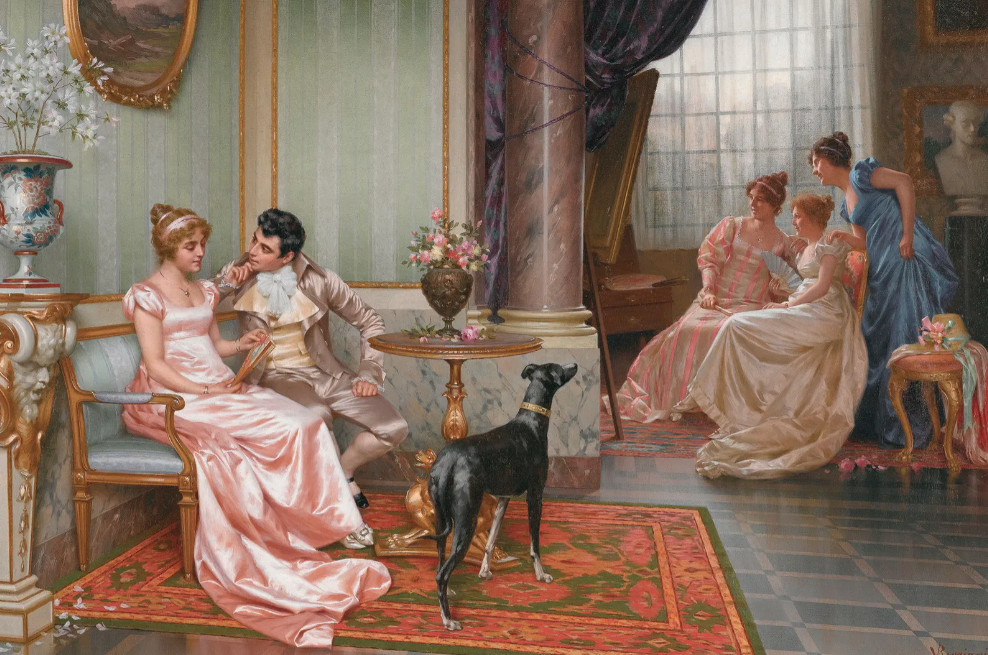
Before we can examine the evolution of romance and relationships, we need to make a distinction between two terms: courtship and dating. Courtship is considered archaic and old-fashioned, but it played a key role in the union between two people in the past.
The main difference between courtship and dating is the intention. Courtship is when both parties are prepared to make a serious commitment or get married. In contrast, people who date don’t necessarily do it with commitment in mind. Couples could date to have fun and enjoy romantic connections. Courting can be compared to a period and dating to a comma.
Courting also involves parents and family. Integrating family involves a certain level of accountability, and members can give their opinions of the person’s suitability. If they don’t like them, the relationship does not proceed into something serious.
Dating does not involve anyone outside the couple, so it’s up to both people to ensure they are with someone who meets their criteria and treats them right. Family only gets involved in the later stages of dating if it transitions into a serious commitment.
Lastly, boundaries around physical intimacy are upheld in a courtship. Commitment should precede intimacy. In dating, boundaries are self-determined, and the two people can take it as far as they want, even if feelings and commitment are not involved.
The rules around courtship are perceived as constraining by mainstream society. Popular TV shows like “Sex and the City” and “Desperate Housewives,” glamorized dating and viewing relationships through a temporal lens.
In a culture where people seek to make their own decisions and want the freedom to live outside the traditional molds, courting is unpopular and seen as a relic of the past.
History of Romance: Courtship and relationships through the ages
The history of romance abounds with all kinds of attitudes, customs, and practices. Each epoch and culture had its own rules and ways of doing things that they considered normal. Some might sound strange to us today, but it made sense to the people back then. Just as mindless swiping on dating apps and eye-balling strangers in noisy, smoky bars seems normal to singles today.
Taking a trip through the ages will help us appreciate the contrast and similarities between old relationship models and newer ones. We’ll understand how the ideal of romance has shifted over time and how it brought people together.
Here are four trends that definite the attitudes we’ve had towards relationships in history:
1. Head over heart: when love was practical
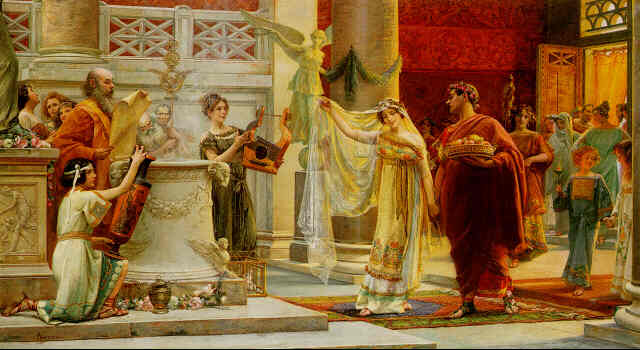
For most of human history, marriage was deeply practical. It was an economic arrangement that benefited both parties and their families.
For women especially, marriage was comparable to running a small business, which involved household duties, property management, cooking meals, raising children, and entertaining guests.
There was no room for affection and romance in such scenarios, for a good reason. Times were a lot harder back then. People had shorter life spans, and their survival was always in jeopardy. At any time, they were at risk of being plundered by enemies or having a poor harvest.
If there was any dalliance and heady affairs, it was found in the higher echelons of society, where people could afford luxury because their basic needs were met. An example of that is a sultan enjoying his mistresses in a harem.
But even the upper class in most societies aimed for advantageous marriages where they could gain something from a union, like acquiring property, fortunes, land, titles, kingdoms, dowries, cattle, or other assets.
A couple’s parents negotiated the matches, and the courtship unfolded soon after through gifts, correspondence, and chaperoned visits.
This was a short phase when the couple could get to know each other and (hopefully) start building affection for one another.
We still see similar practices and attitudes towards marriage in certain cultures today. Arranged marriages are the norm in some communities because of the convenience and because it is fundamental to their religious beliefs and customs.
Practical marriages existed in many cultures, including the Neolithic, Ancient Babylon, Egypt, Rome, and Greece, Medieval Europe, and the kingdoms of Ancient Arabia, East Asia, and India.
2. Romance blossoms: when courting and affection become valid
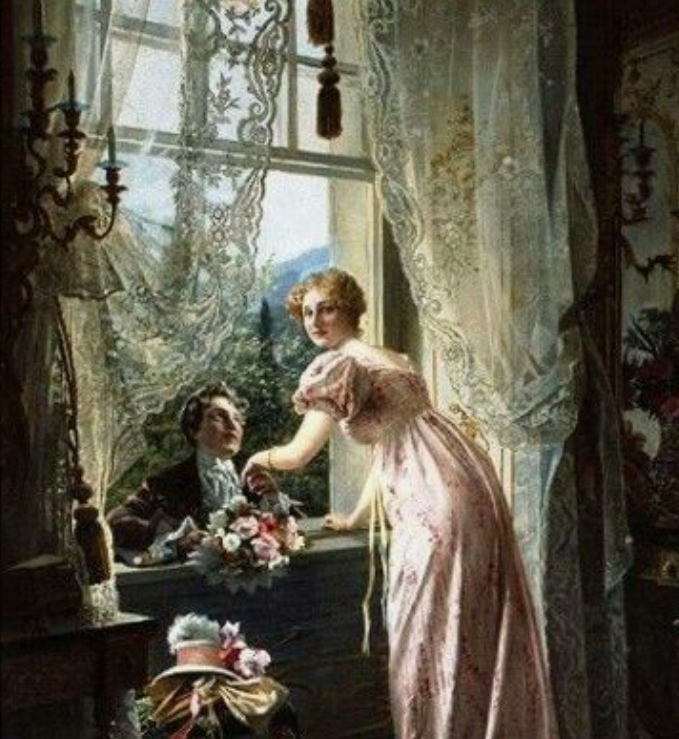
The idea of marriage as a duty rather than something you did for emotional pleasure was questioned at certain points in history. For most people, marriages were still a practical matter, but romantic ideals were starting to gain a foothold in society.
We see Europe’s first noticeable rumblings of romance in the Middle Ages. “Courtly love” highlighted the idea of deep feelings between unmarried people. Medieval courtly love involves expressions of devotion through chivalrous acts, poetry, music, and tokens of love like coins etched with hearts, locks of hair, ribbons, and books.
The idea of romantic love developed further in the Renaissance, when poets described it as a profound force that was both spiritual and sexual.
Courtship took center stage and became more formal in the Victorian era. Once formally introduced, the gentleman who wished to escort a lady to her home would present his card to her. The lady would look over the options of potential suitors and choose her escort by giving him her own card. Most of the courting process happened at the girl’s home under the vigilant eyes of her family and the presence of a chaperone.
By the 1800s, marriage was increasingly associated with affection rather than alliance. Physical attraction was becoming a requirement in a partner, and young couples rebelled against parental intervention in their choice of suitors.
Men were expected to “fill her ears with themes of love” to get women’s attention. Most of us have insight into this golden era of romance through the fictional love stories of Jane Austen.
With the advent of the industrial age in the 19th century, people’s finances were no longer tied to lands and their families. Financial independence meant they didn’t have to rely on family assets and inheritance for economic security, thus breaking the link between economics and marriage.
What emerged from this new reality was a focus on individual rights and the importance of personal happiness. Marrying for love became an exercise of personal rights and the pathway to romantic bliss. A key development in the history of romance.
3. Love is embraced and commodified: the rise of fantasy romance and dating
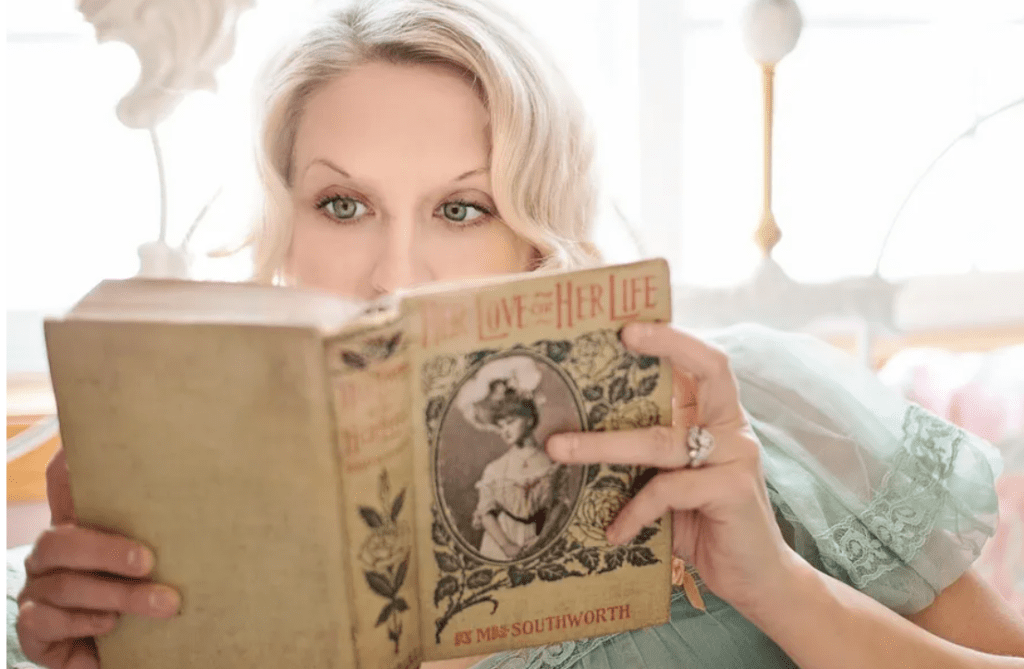
When the 20th century rolled around, the social landscape changed dramatically. Women were entering the workforce, and the suffrage movement was picking up steam.
More and more people were financially independent, and emotions become more valued and appreciated. People were marrying for love, but pockets of aristocratic circles (and other cultural communities) still practiced arranged marriages.
Business persons began to see a viable opportunity to capitalize on this growing appetite for romance. They used it to churn out Hollywood movies and pop music, marketing it to audiences hungry for fantasy.
It was a welcome escape from the drudgery of everyday life and the harsh realities of the Great Depression and, later, World War II. “Happily ever after” was an easy sell because people wanted to believe in it – they needed hope in a time of turbulence and uncertainty.
After World War II, the ’50s and ’60s saw an upsurge in novels, movies, and songs that pushed the narrative of romantic love into the mainstream. The dopamine kick kept people going as they lived in real relationships that didn’t always offer the highs they wanted.
The influence of fantasy romance has gradually shifted our expectations of love. The reality of having a mature relationship, with its complexities and compromises, was swept under the rug in the portrayals in the media. Of course, people preferred the drama, plot twists, anticipation, and pining during separations.
However, people still took a traditional approach to dating for much of the 1900s. In the 1950s and 1960s, men had to initiate the dating process and ask a woman out, as it was improper for a woman to do so.
Dating was generally a group activity; after a couple of dates, it was time to “go steady” and talk about commitment. The shorter and more straightforward dating process meant that more people got married and were a lot younger when they did compared to couples today.
4. Rebels of love: open dating and casual connections become acceptable
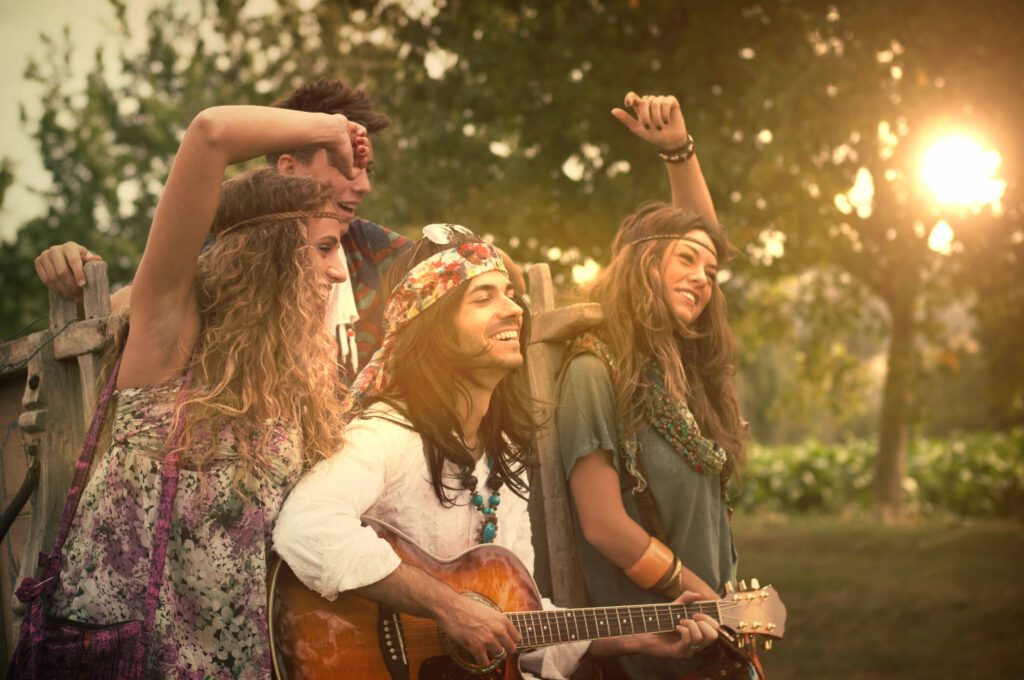
Somewhere in the 1960s, a shift in social values led to the age of free love in the 1970s. The courtship and dating process was transformed by the liberal and open social and sexual attitudes that defined this age.
Romantic love was idolized and considered even more important than marriage. Effective birth control pills in the market made causal connections easier without the intent of marriage.
The language of relationships changed from “going steady” to “dating around” or “playing the field.” Instead of going on several platonic dates, couples skipped it and went steady right away.
Each decade, the sexual revolution took a stronger hold on the collective. It started as a hippie practice but became mainstream by the 1980s. This has led to the “hookup culture” and open relationships that are somewhat acceptable in dating culture as long as both partners are on the same page.
As you look back on the history of romance, do any attitudes and habits stand out to you? If any align with your personality, consider incorporating them into your intimate connections. It will infuse your life with new energy and perhaps even facilitate your ascension to higher dimensions of love.
All my best on your journey,
Seline

Questions for you: What are your favorite eras in the history of romance? What about their practices do you like and could see yourself replicating in your own life?
Did you like this post? Sign up below, and I’ll send you more awesome posts like this every week.

When I find out that my Mom has secret (hippie life style) I was shock but I accepted it, because it was her choice in life, so when I became (a Dreamer 7 in life), she was the an eye doctor who accepted who I was. A Hippie & a Dreamer can be a cool partners, We love all personality as weird as they come, so be kind to humanity every day please.
There is a lot we can learn from the past and this is a perfect example! Things change, but the underlying goals and motives are there. It is often times just the way we exhibit and the display we put on that changes. Love is love- we are just changing how to react to it and show it to others.